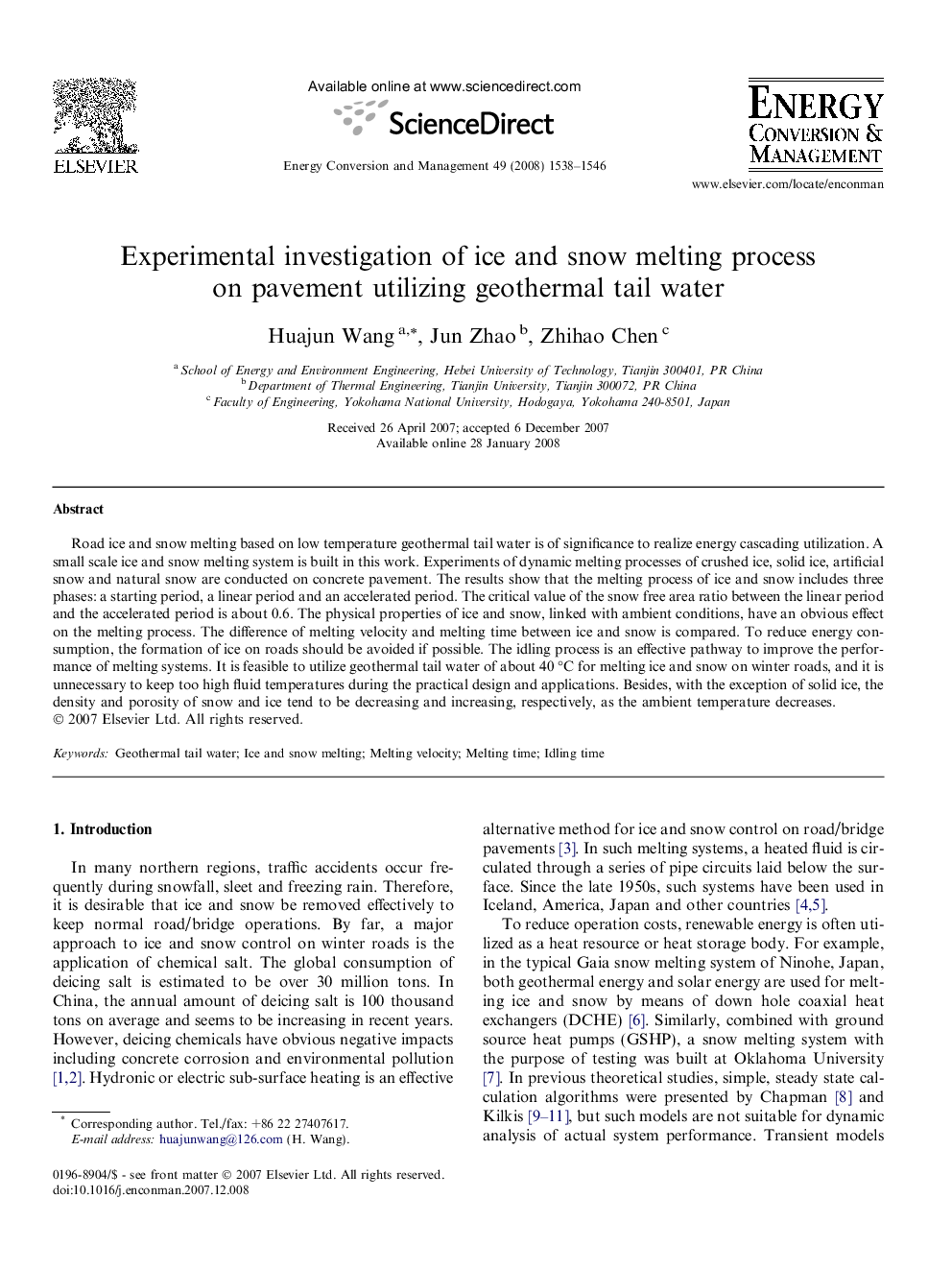| Article ID | Journal | Published Year | Pages | File Type |
|---|---|---|---|---|
| 772790 | Energy Conversion and Management | 2008 | 9 Pages |
Road ice and snow melting based on low temperature geothermal tail water is of significance to realize energy cascading utilization. A small scale ice and snow melting system is built in this work. Experiments of dynamic melting processes of crushed ice, solid ice, artificial snow and natural snow are conducted on concrete pavement. The results show that the melting process of ice and snow includes three phases: a starting period, a linear period and an accelerated period. The critical value of the snow free area ratio between the linear period and the accelerated period is about 0.6. The physical properties of ice and snow, linked with ambient conditions, have an obvious effect on the melting process. The difference of melting velocity and melting time between ice and snow is compared. To reduce energy consumption, the formation of ice on roads should be avoided if possible. The idling process is an effective pathway to improve the performance of melting systems. It is feasible to utilize geothermal tail water of about 40 °C for melting ice and snow on winter roads, and it is unnecessary to keep too high fluid temperatures during the practical design and applications. Besides, with the exception of solid ice, the density and porosity of snow and ice tend to be decreasing and increasing, respectively, as the ambient temperature decreases.
